The Ban the Bomb Movement in London: 1952-1963:
The Ban The Bomb movement grew after the war. Tens of thousands of people marched from the Atomic Weapons Research Establishment at Aldermaston, Berkshire, to Trafalgar Square. It was the largest demonstration London has seen this century. It was the third annual Easter march organised by the Campaign for Nuclear Disarmament (CND).
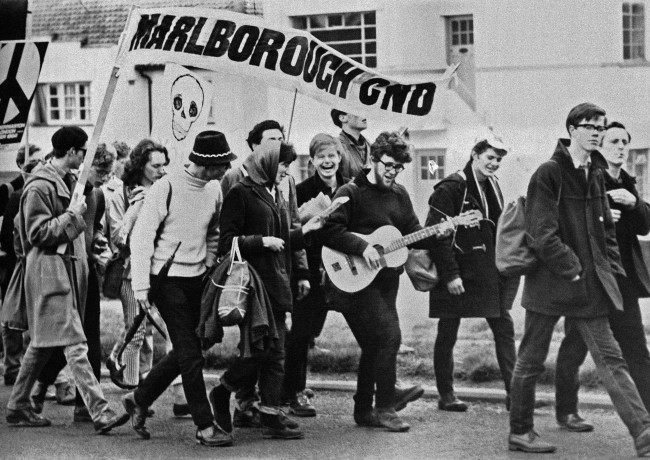
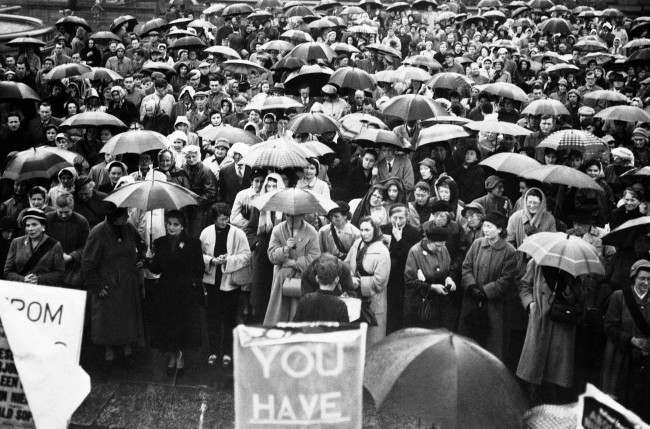
A huge crowd, mostly women sheltered under their umbrellas in Trafalgar square, London on May 12, 1957, at a mass meeting of the national council for the abolition of nuclear weapon tests. The rally was organized as a women’s protest march against H-bomb tests from Hyde Park to Trafalgar square. (AP Photo)
The last Aldermaston to London took place in 1963, the same year the international test ban treaty was signed, which partially banned nuclear tests.
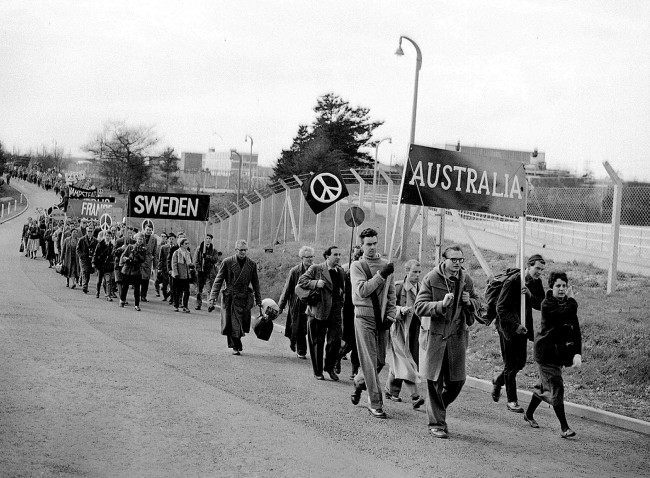
The Australian and Swedish contingents in the anti-H bomb march from the Atomic Weapons Research Establishment at Aldermaston, Berkshire, to London. Tens of thousands of people marked the end of the Aldermaston “ban the bomb” march with a rally in central London, when around 60,000 protesters gathered at Trafalgar Square (although organisers claimed the crowds numbered at least 100,000). This was the largest demonstration London had seen this century. Date: 27/03/1959
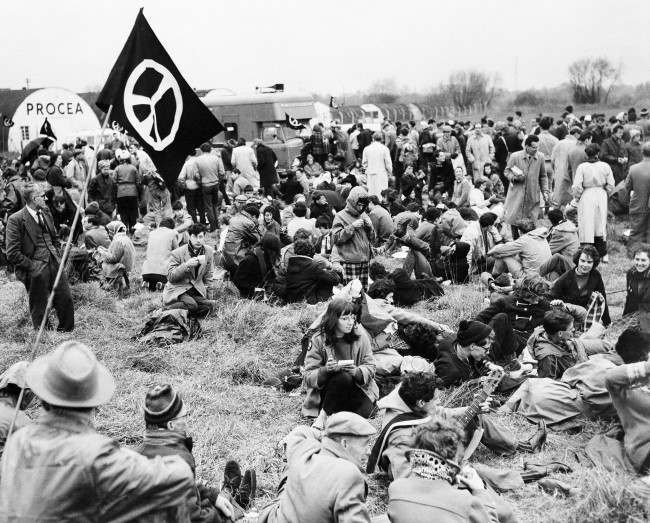
Marchers protesting nuclear bomb tests rest in a field near airport in London March 30, 1959.
*Ban the bomb is a logo for the campaign for nuclear disarmament or CND which first appeared in the 1950s. Since then it had become without a doubt one of the most recognisable symbols in the world. The name Ban the Bomb may not be known but 90% of people will be aware that it is a symbol for peace and anti-war.
It was designed by a man called Gerald Holtom in the 50s for a protest march being made by people who were protesting against the use of nuclear weapons by the British government and although the march was unsuccessful it launched the symbols use in the world from the USA to Asia, everywhere promoting peace and an end to conflict.
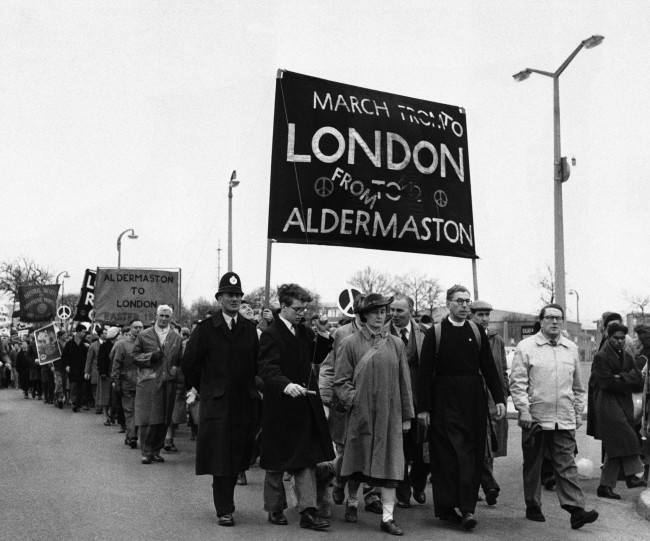
Demonstrators start out on April 15, 1960 from Aldermaston, England, on 54-mile Ban-the-Bomb protest march to London. Second from right, front, is canon John Collins of St. Paul’s Cathedral, a member of the campaign for nuclear disarmament, which organized the four-day Easter march for the third successive year. March began with some 9,000 demonstrators from a field near the Aldermaston atomic weapons research establishment. Another 6,000 demonstrators were expected to join the march before it ends with a mass rally in London’s Trafalgar Square on April 18.
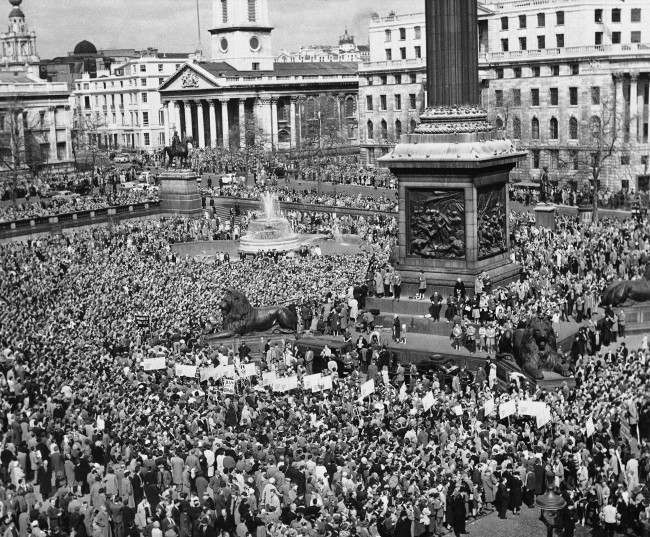
Nearly 70,000 persons pack in Trafalgar Square, London on April 18, 1960, in demonstration that climaxed four-day ÂBan the Bomb march from Aldermaston to the British capital. Aldermaston is British atomic research center.
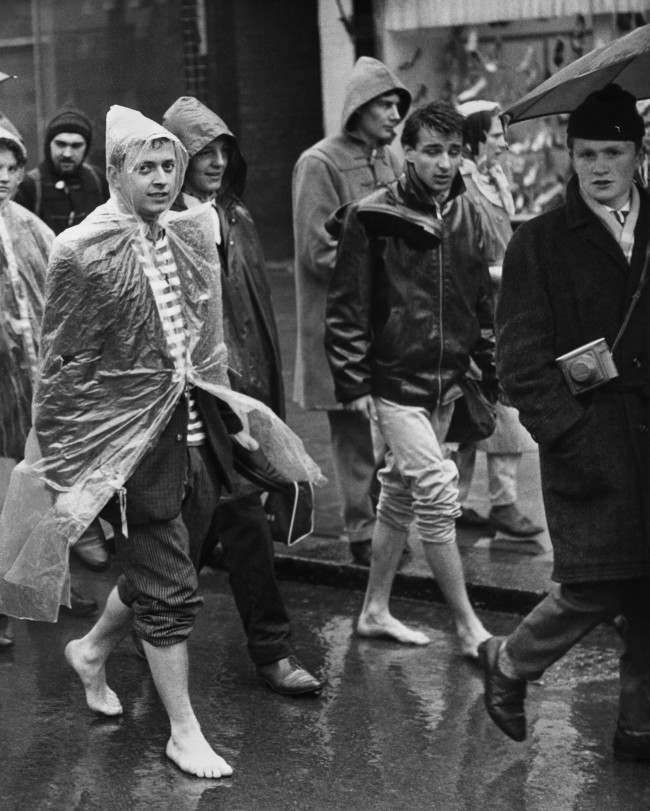
A couple of barefooted youths with trousers rolled up trudge through Cheswick, west London, in the rain on April 3, 1961, as the Aldermaston column of ÂBan-the-bomb marchers set off on the last weary lap of their long trek to Trafalgar Square. Another column of marchers is converging on Trafalgar Square from Wethersfield, Essex, where there is a U.S.A.F. base. They spent the night in East London.
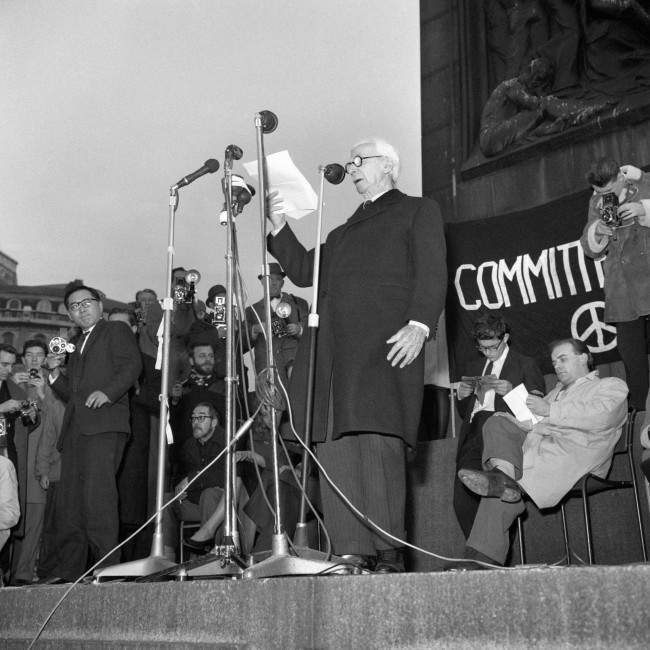
Earl Russell speaking from the plinth of Nelson’s Column when he attended a meeting held by the Committee of 100, the anti-bomb organisation, in Trafalgar Square, London, to explain the Committee’s aims and principles.
Date: 29/10/1961
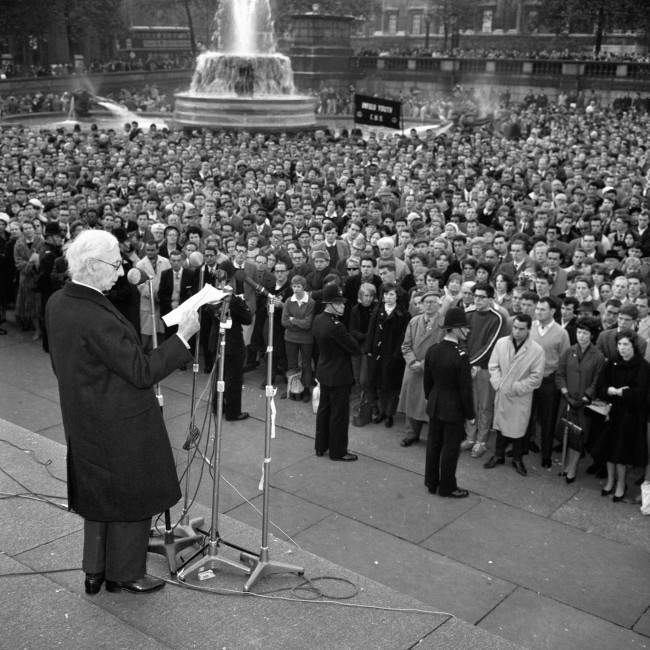
Earl Russell speaking from the plinth of Nelson’s Column in Trafalgar Square at a protest meeting organised by The Committee of 100, the anti-bomb organisation.
Date: 29/10/1961
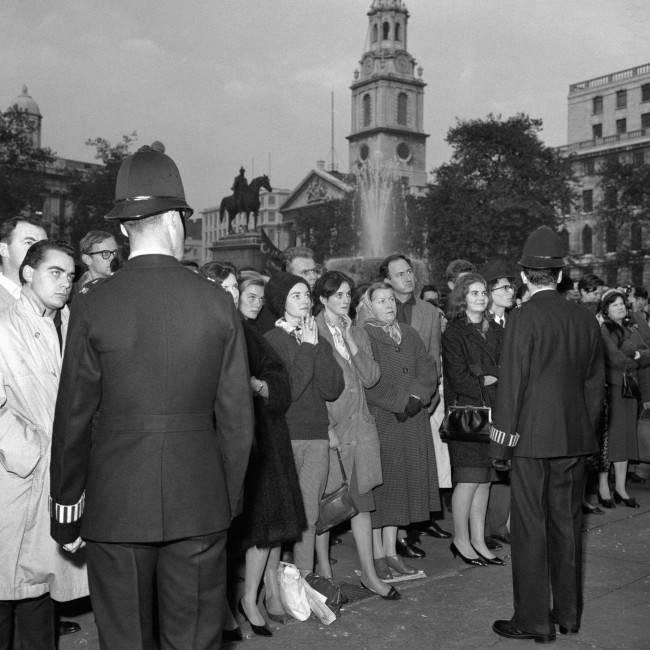
Police keep a respectful presence at the protest meeting in Trafalgar Square organised by The Committee of 100. The crowd are listening intently as one of the founders of the movement, the philosopher Earl Russell, was speaking.
Date: 29/10/1961

Nearly 70,000 persons pack in Trafalgar Square, London on April 18, 1960, in demonstration that climaxed four-day Ban the Bomb march from Aldermaston to the British capital. Aldermaston is British atomic research center.
Date: 18/04/1960

Police keep a respectful presence at the protest meeting in Trafalgar Square organised by The Committee of 100. The crowd are listening intently as one of the founders of the movement, the philosopher Earl Russell, was speaking.
Date: 29/10/1961
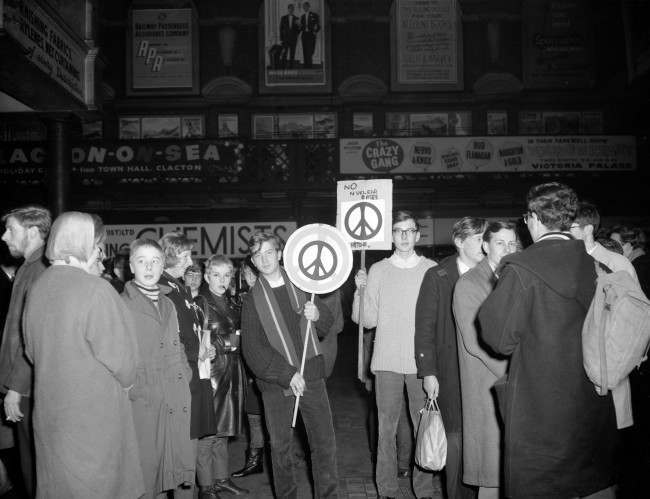
‘Ban the Bomb’ marchers at Liverpool Street Station, London
Date: 09/12/1961
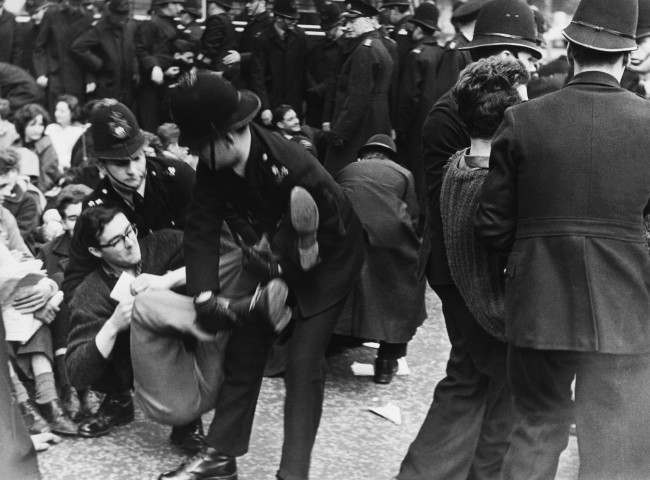
London policemen had to carry these Ban-the-bomb demonstrators to waiting trucks on April 29, 1961,
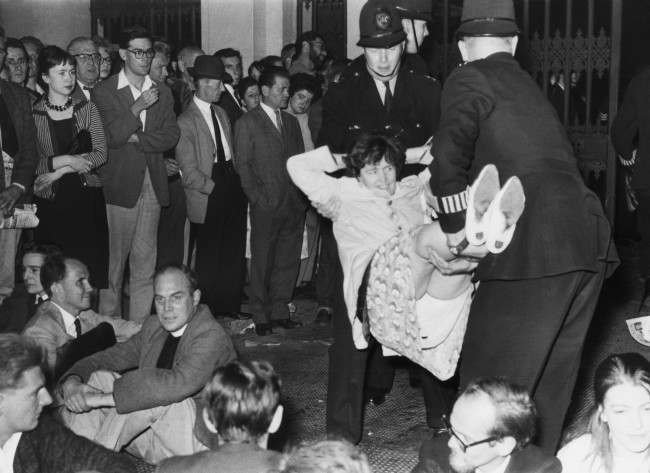
A demonstrator lets himself go limp as police officers carry him from Trafalgar Square, London, United Kingdom on Sept. 17, 1961 to a waiting van during the mass ban-the-bomb rally.

A demonstrator lets himself go limp as police officers carry him from Trafalgar Square, London, United Kingdom on Sept. 17, 1961 to a waiting van during the mass ban-the-bomb rally.
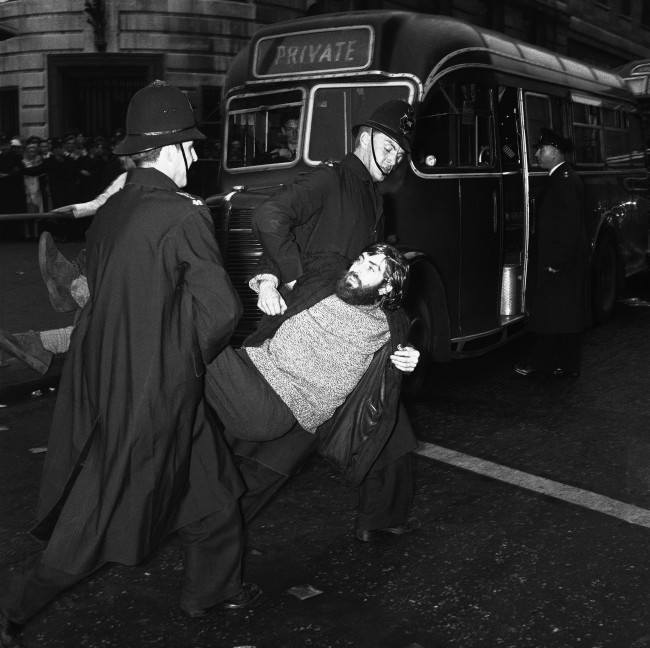
A long-haired young man, wearing a beard and beatnik style clothes, is carried to a waiting van by police after being arrested during the huge Ban-the-bomb rally in LondonÂs Trafalgar Square, United Kingdom on Sept. 17, 1961. Many arrests were made during skirmishes between police and demonstrators as the crowd grew to well over 10,000. Hundreds of extra police were called on duty to deal with the crowds.
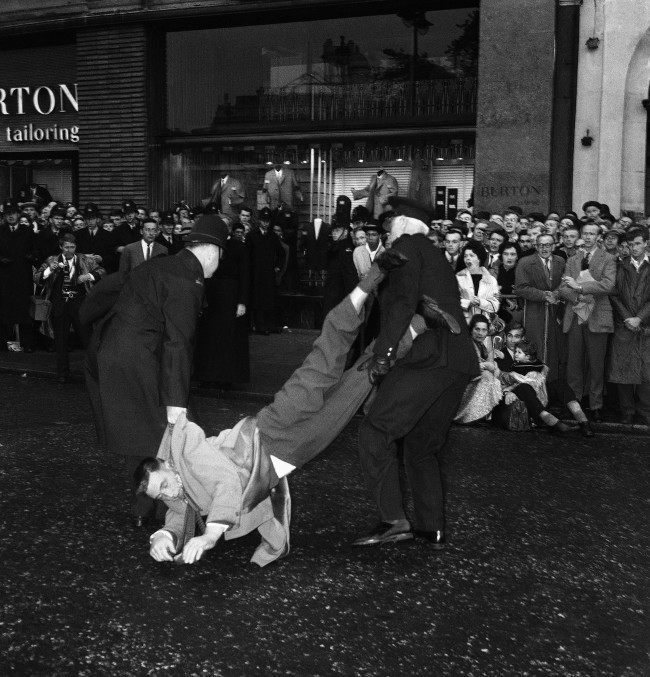
A well-dressed man is dragged away, head down, by police officers after sitting down during the huge Ban-the-bomb rally in LondonÂs rain-soaked Trafalgar Square, United Kingdom on Sept. 17, 1961. Note shouting woman in right background.
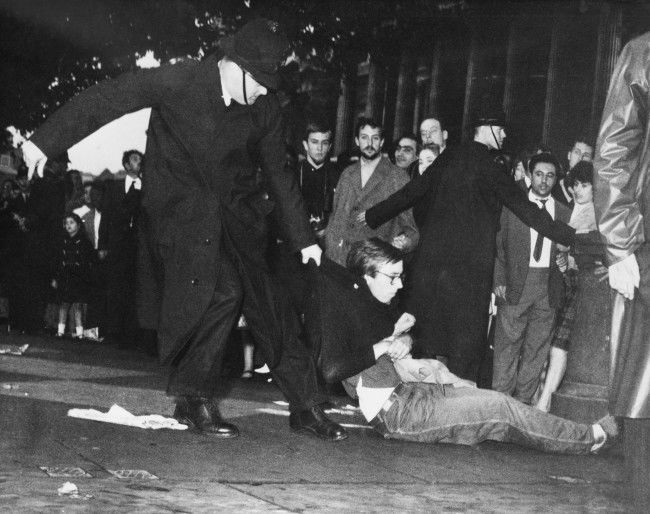
A young man in beatnik-style clothes is dragged along by a policeman
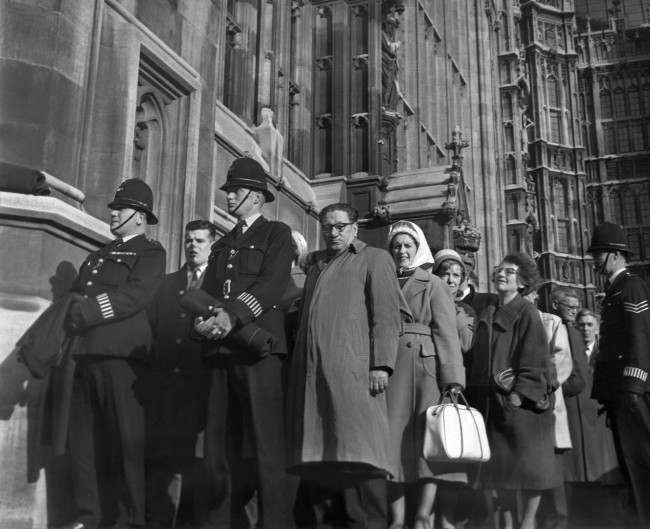
Playwright John Osborne (hands in pockets) who was one of the many arrested during an eight hour ban-the-bomb sit-down demonstration in Trafalgar Square, London walks through London after being fined 1 at court.
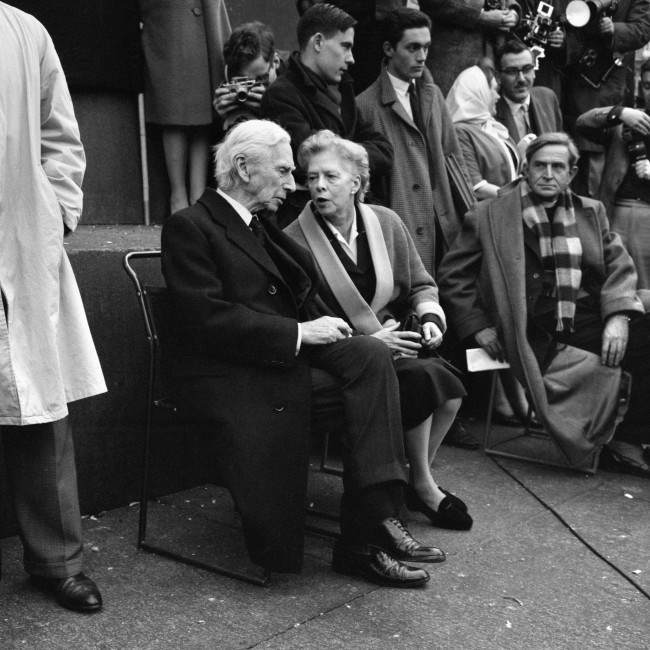
Lady Russell has a word with Earl Russell on the plinth of Nelson’s Column when they attended a meeting held by the Committee of 100, the anti-bomb organisation, in Trafalgar Square, London, to explain the Committee’s aims and principles.
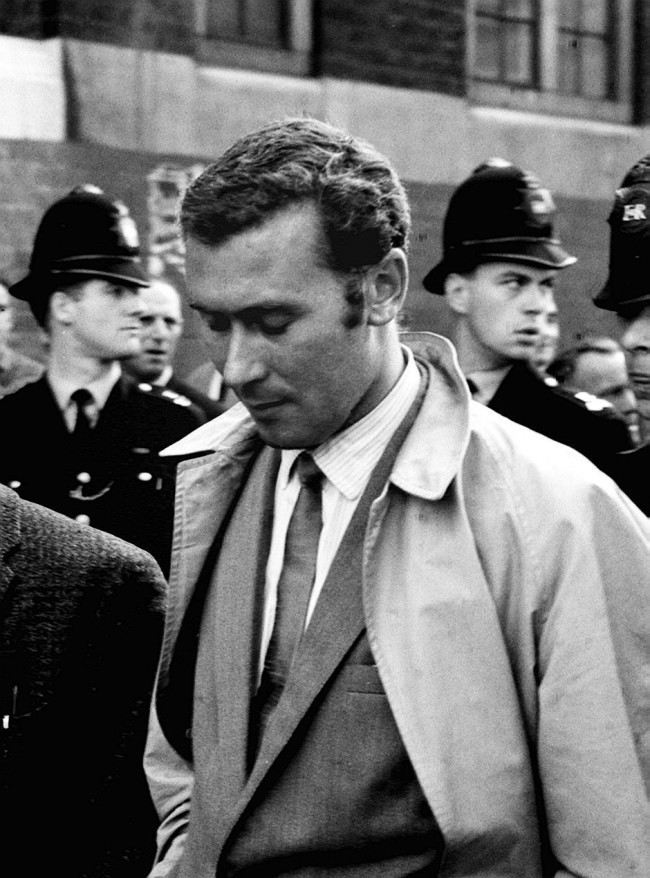
Playwright John Osborne (hands in pockets) who was one of the many arrested during an eight hour ban-the-bomb sit-down demonstration in Trafalgar Square, London walks through London after being fined 1 at court.
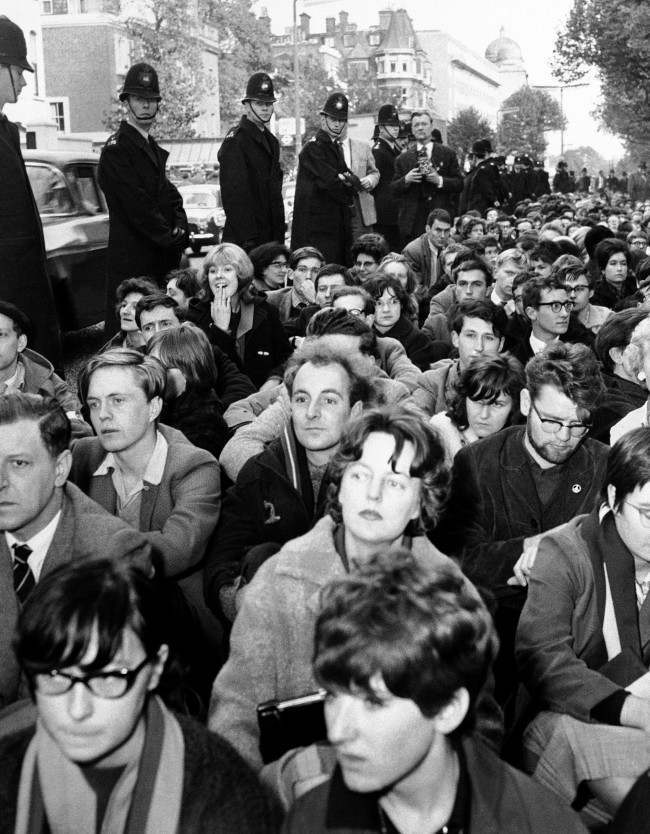
Police line bayswater road in London on Oct. 21, 1961, alongside squatting ban-the-bomb demonstrators near the soviet embassy.
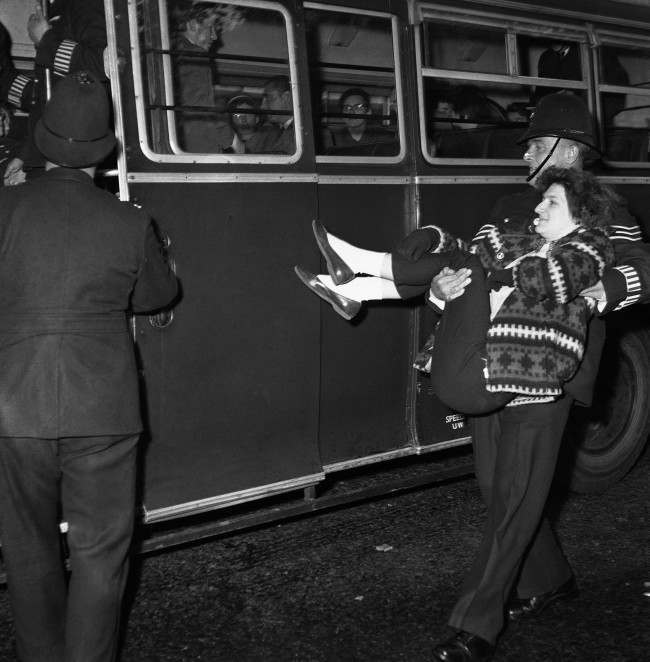
A girl ban-the-bomb demonstrators is carried to a waiting van by a policeman in Bayswater Road in the vicinity of the Soviet Embassy in London, United Kingdom on Oct. 21, 1961, by 5 pm. At least 350 persons had been arrested for taking part in the huge sit-down protest in defiance of police orders. They were protesting Russians nuclear tests General and Mr. KhrushchevÂs announced intention to explode a 50-megaton bomb in particula
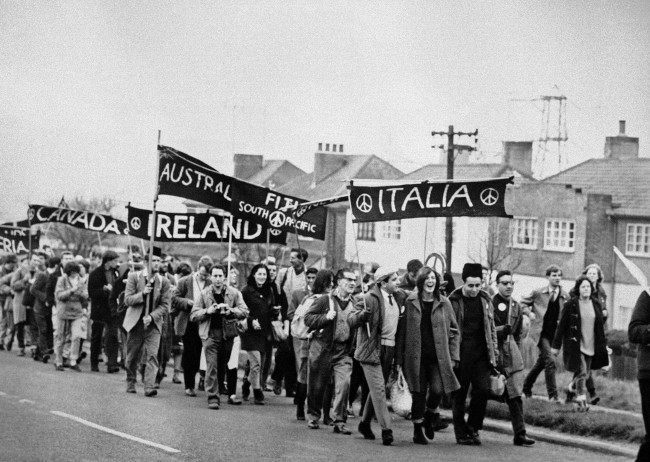
Foreign groups (from Italy, Fiji, Australia, Canada and Algeria) are in the column of marchers as some 10,000 supporters of the Campaign for Nuclear Disarmament set out from Reading, Berkshire on April 21, 1962, on the second leg of their protest march from Aldermaston to London. The ban-the-bomb demonstrators spent the night under canvas outside Reading.
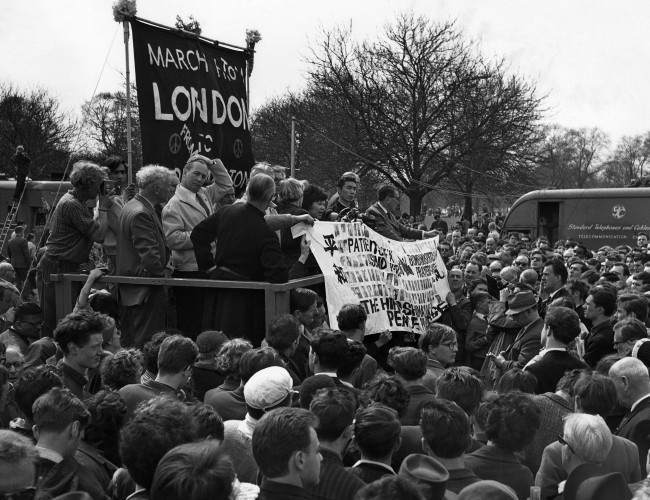
Two survivors of the Hiroshima atomic bomb hold up a banner as they join leaders of the Easter Ban-the-Bomb march on the dais in LondonÃs Hyde Park on April 23, 1962, at the mass rally climaxing the 50-mile march from Aldermaston. They are Miyoko Matsubara, a 29-year-old nurse, and Hirosama Hanabusa, 18, a law student. In black at near end of dais is Canon John Collins of St. Paul’s Cathedral, chairman of the campaign for nuclear disarmament.
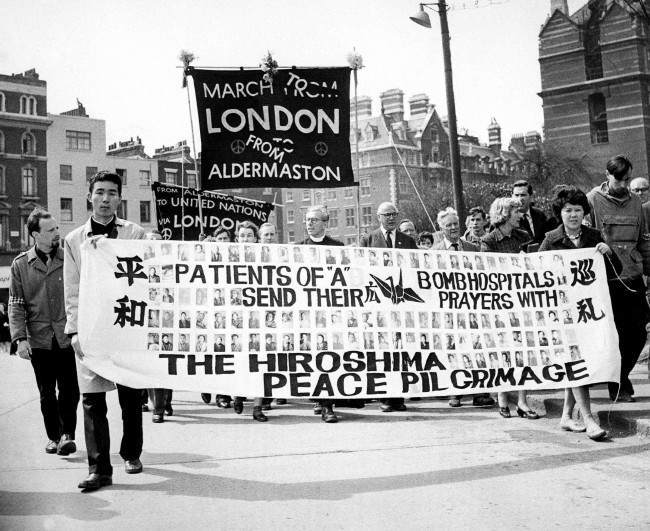
Two survivors of the Hiroshima atomic bomb, 29-year-old nurse Miyoko Matsubara and law student Hirosama Hanabusa, 18, join the column of British nuclear disarmers as the demonstrators file into London’s Hyde Park on April 23, 1962, for the mass rally climaxing their Easter March from Aldermaston, 50 miles from London. The couple, who call themselves ÂThe Japanese Peace Pilgrims, hold a big banner carrying pictures of patients still in hospital suffering with effects from the atomic bomb. Behind the banner is Canon John Collins, chairman of the campaign for nuclear disarmament, and next to him, at right, is trade union leader Frank Cousins.
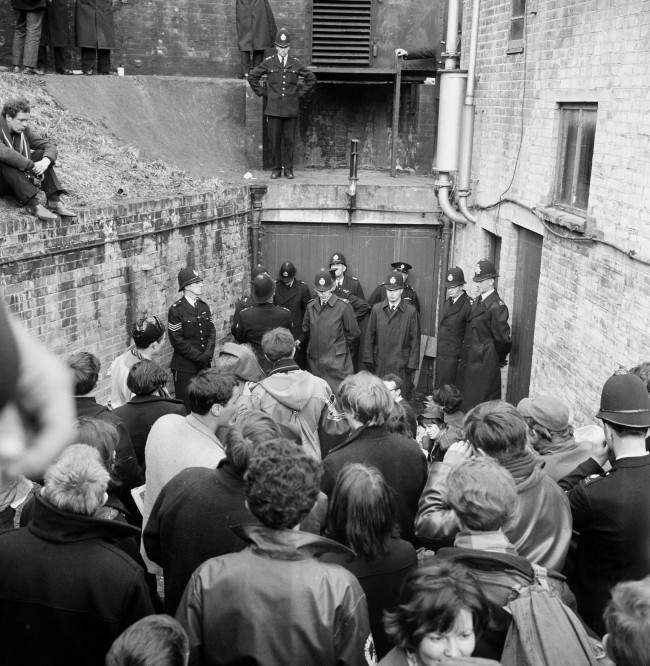
A double rank of policemen guards an entrance to a bunker type building in Berkshire, where nuclear disarmament demonstrators attempted to stage a protest. Date: 15/04/1963
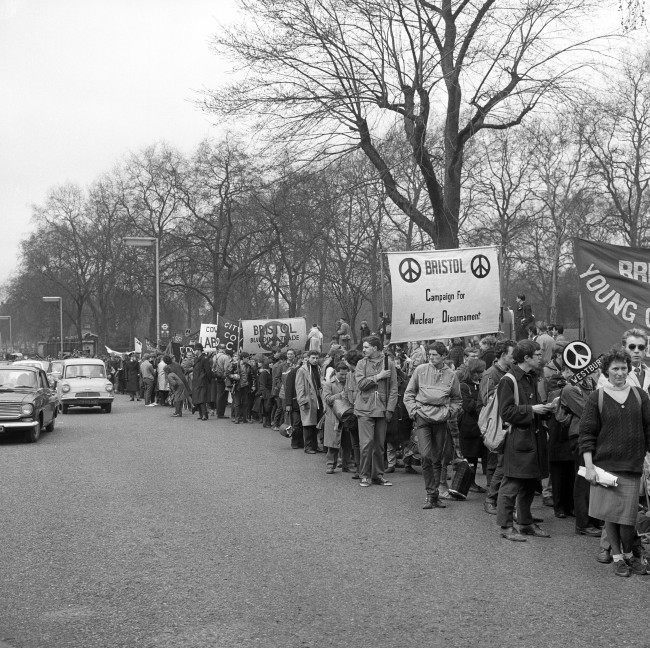
A long column of ban the bomb marchers arrive at Hyde park, London. The march had started from the Atomic Weapons Research Establishment at Aldermaston. Date: 15/04/1963
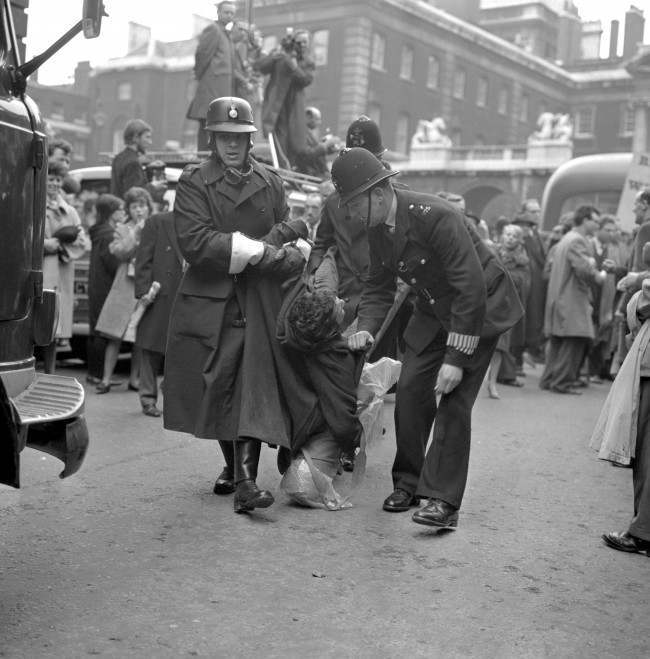
A man gripped by three policemen in Whitehall, when scuffles broke out as police tried to control Aldermaston to London anti-bomb marchers as they passed through on their way to the final rally in Hyde Park. Date: 15/04/1963
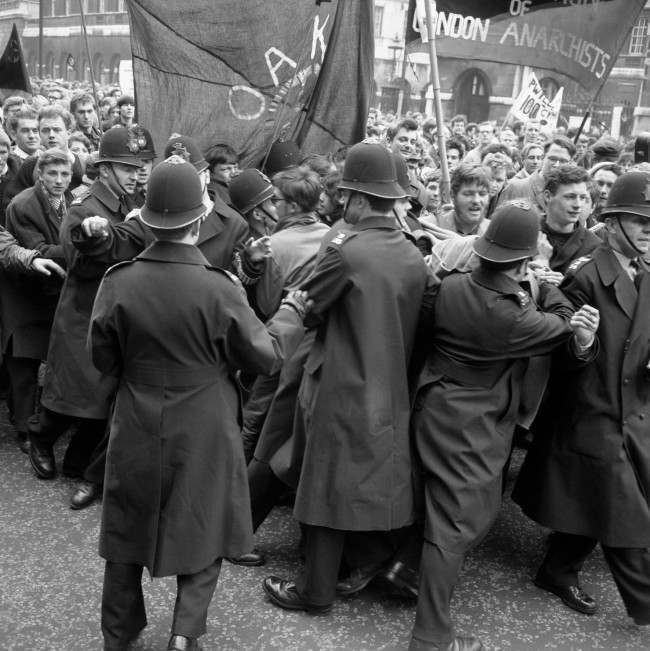
Police straining against a solid mass of people in an effort to control a contingent of Aldermaston to London marchers as they made their way to the final rally in Hyde Park. Date: 15/04/1963
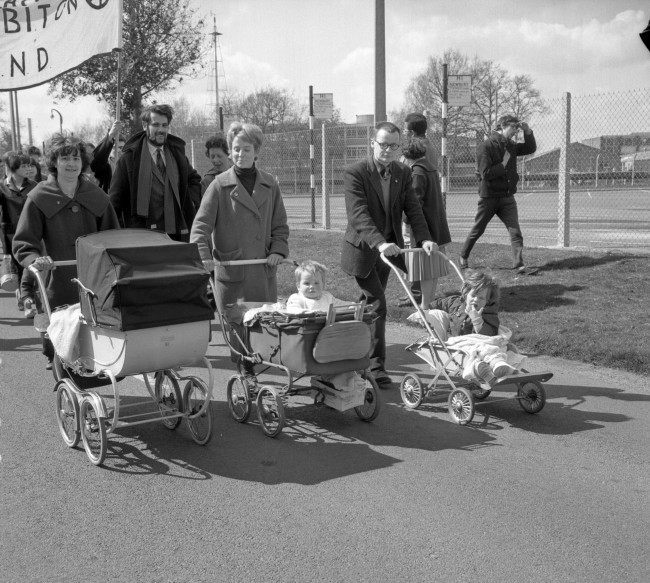
Prams and baby passengers setting off for Reading on the first stage of the Campaign for Nuclear Disarmament’s Aldermaston march to London. Date: 15/04/1963
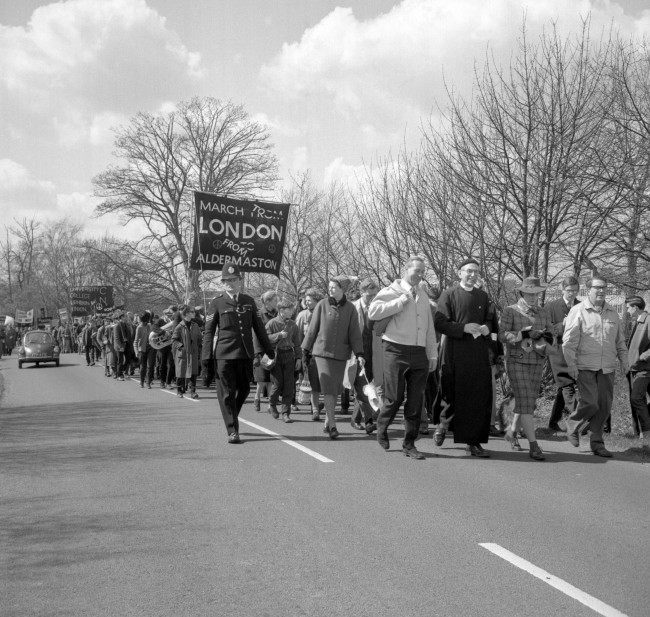
Left to right, Anthony Greenwood, Labour MP for Rossdale; Canon John Collins, the CND’s chairman; Jacquetta Hawkes, wife of author J.B Priestley and Professor R. Calder, the science journalist, during the march. Date: 15/04/1963
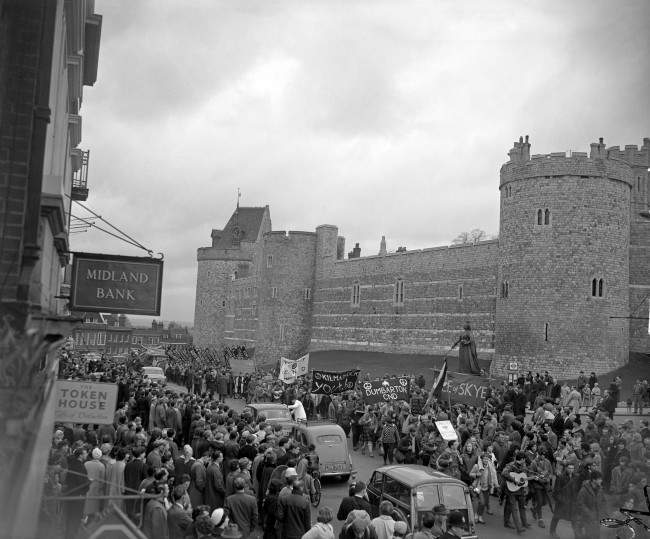
Some of the campaign marchers passing Windsor Castle. Date: 14/04/1963
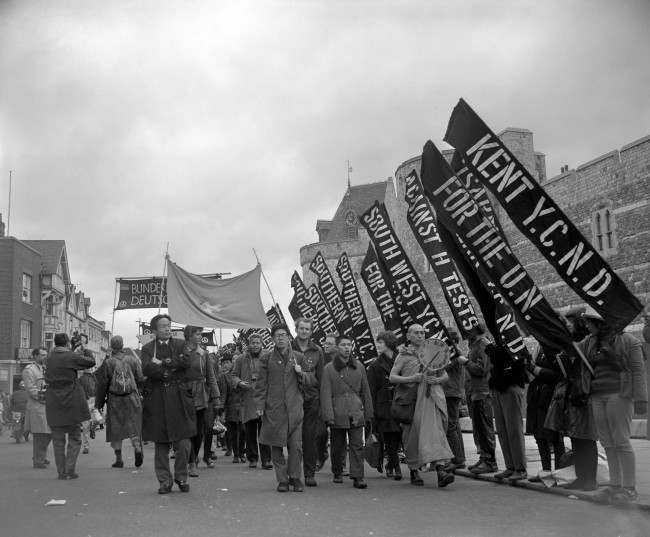
A group of campaign marchers from Hiroshima, Japan, pass Windsor Castle. Date: 14/04/1963
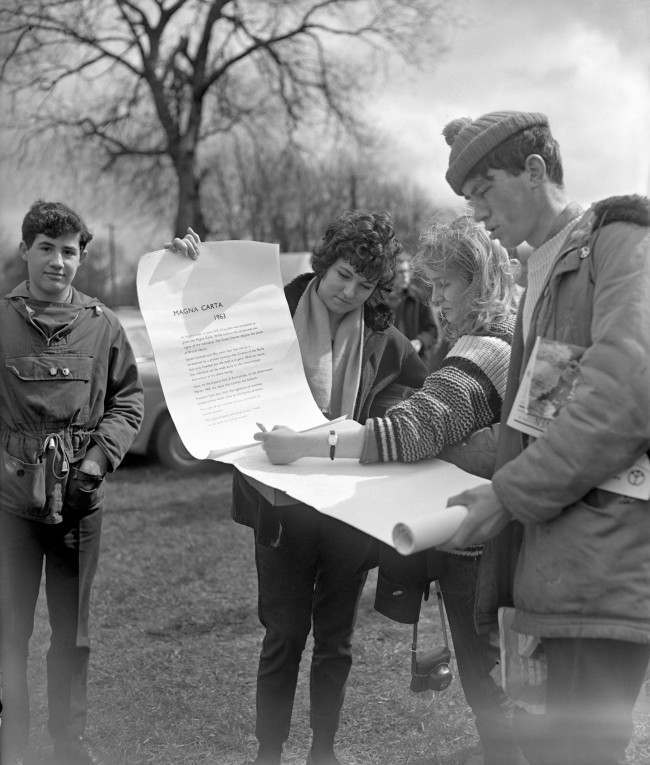
Some of the marchers sign a “Magna Carta 1963” at Runnymede, on the site of the signing of the original Magna Carta 750 years ago. 14/04/1963
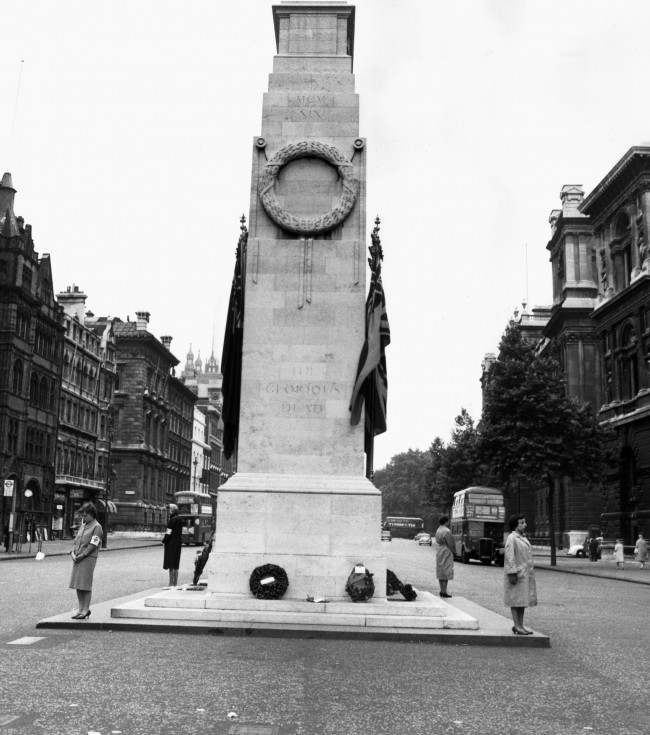
Four women, members of the Women Against the Bomb movement, stand in silence at the Cenotaph, Whitehall, London on August 6, 1962, as part of a 12-hour vigil commemorating the dropping of the atom bomb on Hiroshima, 17 years ago. All the women are mothers with young children, and they include Americans, an Australian and a Nigerian. They will stand in shifts until 8 pm this evening. Date: 06/08/1962
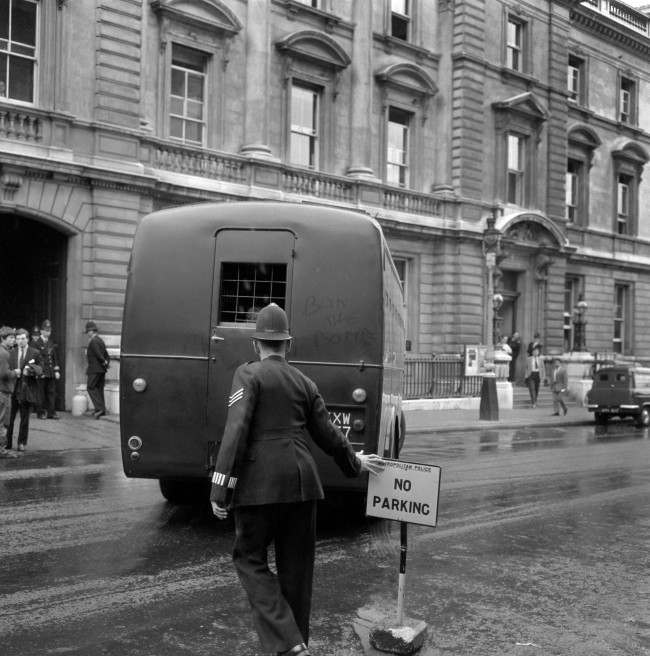
“Ban-the-Bomb” is written inn the dust on the back of the Metropolitan Police Black maria van, believed to be carrying members of the the anti-nuclear Committee of 100 after they had received jail sentences at Bow Street Magistrates court.
Date: 12/09/1961
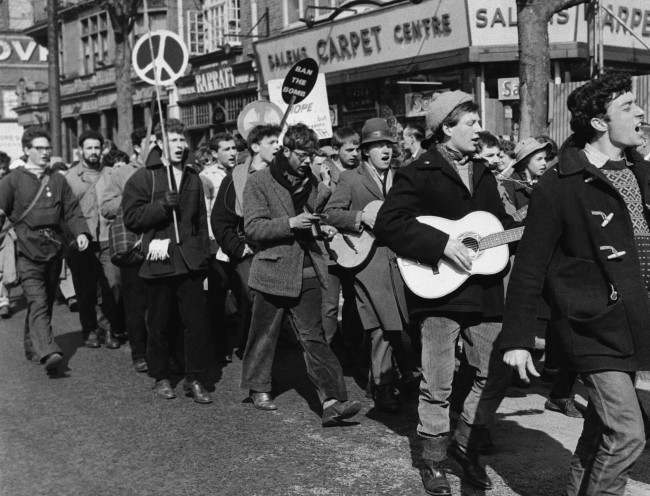
Guitar strumming youths and banner bearers march into London on April 18, 1960 in the 20,000 strong procession of anti a bomb demonstrators protesting against the manufacture of nuclear weapons? The procession is heading for Trafalgar Square London, where huge anti bomb rally is scheduled.
Date: 18/04/1960
Would you like to support Flashbak?
Please consider making a donation to our site. We don't want to rely on ads to bring you the best of visual culture. You can also support us by signing up to our Mailing List. And you can also follow us on Facebook, Instagram and Twitter. For great art and culture delivered to your door, visit our shop.

